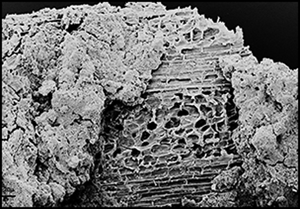Crossref Citations
This article has been cited by the following publications. This list is generated based on data provided by
Crossref.
Carmichael, Stephen W.
2022.
Microscopy Reveals Ancient Textiles Were Made From Trees!.
Microscopy Today,
Vol. 30,
Issue. 2,
p.
8.
McIntosh, Susan Keech
and
Cartwright, Caroline R.
2022.
Igbo-Ukwu Textiles: AMS Dating and Fiber Analysis.
African Archaeological Review,
Vol. 39,
Issue. 4,
p.
405.
Liu, Li
Levin, Maureece J.
Klimscha, Florian
and
Rosenberg, Danny
2022.
The earliest cotton fibers and Pan-regional contacts in the Near East.
Frontiers in Plant Science,
Vol. 13,
Issue. ,
Mineo, Mario
Mazzucco, Niccolò
Rottoli, Mauro
Remolins, Gerard
Caruso-Ferme, Laura
and
Gibaja, Juan F.
2023.
Textiles, basketry and cordage from the Early Neolithic settlement of La Marmotta, Lazio.
Antiquity,
Vol. 97,
Issue. 392,
p.
314.
Alday, Camila
García, Maria Angélica
Alarcón, Carmela
and
Beresford-Jones, David
2023.
The use and context of fiber plants during the middle preceramic: evidence from La Yerba II and III, south coast of Peru.
Frontiers in Environmental Archaeology,
Vol. 2,
Issue. ,
Haddow, Scott D.
Mazzucato, Camilla
Mangaloğlu-Votruba, Sıla
Yağcı, Barış
Booth, Thomas
Schotsmans, Eline M. J.
and
Knüsel, Christopher J.
2023.
Scratching the surface? A histotaphonomic study of human remains at Neolithic Çatalhöyük.
Archaeological and Anthropological Sciences,
Vol. 15,
Issue. 6,
Jørgensen, Lise Bender
Rast-Eicher, Antoinette
and
Wendrich, Willeke
2023.
Earliest Evidence for Textile Technologies.
Paléorient,
p.
213.
Baldia, Christel M.
and
Armitage, Ruth Ann
2023.
Handbook of Archaeological Sciences.
p.
797.
Rollefson, Gary
2023.
“And in Length of Days Understanding” (Job 12:12).
p.
147.
Gilligan, Ian
2023.
The Textile Hypothesis.
Archaeologies,
Vol. 19,
Issue. 3,
p.
555.
Sağlamtimur, Haluk
Gündüz Balpetek, Fatma
Süpüren Mengüç, Gamze
Batıhan, Metin
Aydoğan, İnan
Özmen Batıhan, Öznur
Boz, Serkan
and
Demšar, Andrej
2023.
Spectroscopic and microscopic analysis of yarn sample found in Başur Höyük Early Bronze Age Cemetery.
Journal of Archaeological Science: Reports,
Vol. 51,
Issue. ,
p.
104190.
Koivisto, Satu
Suomela, Jenni A.
and
Lempiäinen-Avci, Mia
2024.
Artisans of the Stone Age: the utilisation of plant- and wood-based raw materials at the wetland site of Järvensuo 1.
Antiquity,
Vol. 98,
Issue. 397,
Karg, Sabine
2024.
Vegetationsgeschichte der Landschaften in Deutschland.
p.
327.
Haddow, Scott D.
2025.
Bodies in buildings: Human remains and the life histories of houses at Neolithic Çatalhöyük.
Archaeological Research in Asia,
Vol. 41,
Issue. ,
p.
100598.
Maner, Çiğdem
Abay, Eşref
Karadağ, Recep
and
Torgan Güzel, Emine
2025.
Untwisting Beycesultan Höyük: the earliest evidence for nålbinding and indigo-dyed textiles in Anatolia.
Antiquity,
Vol. 99,
Issue. 403,
p.
118.
Ekmen, F. Gülden
Ekmen, Hamza
Crivellaro, Alan
and
Yaman, Barbaros
2025.
How humans engineered possibilities of landscape: baskets and basketry materials in İnönü Cave.
Archaeological and Anthropological Sciences,
Vol. 17,
Issue. 1,



